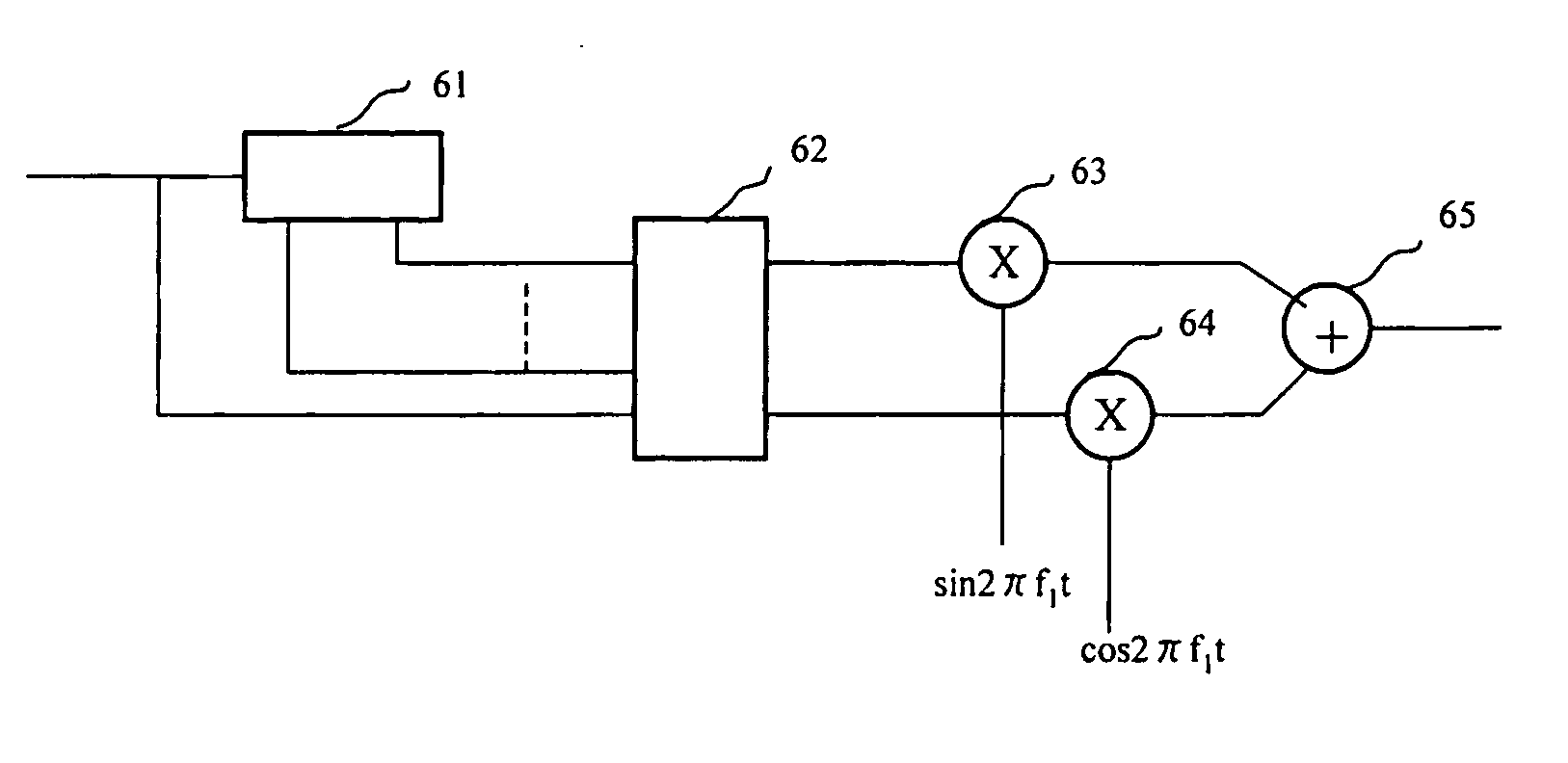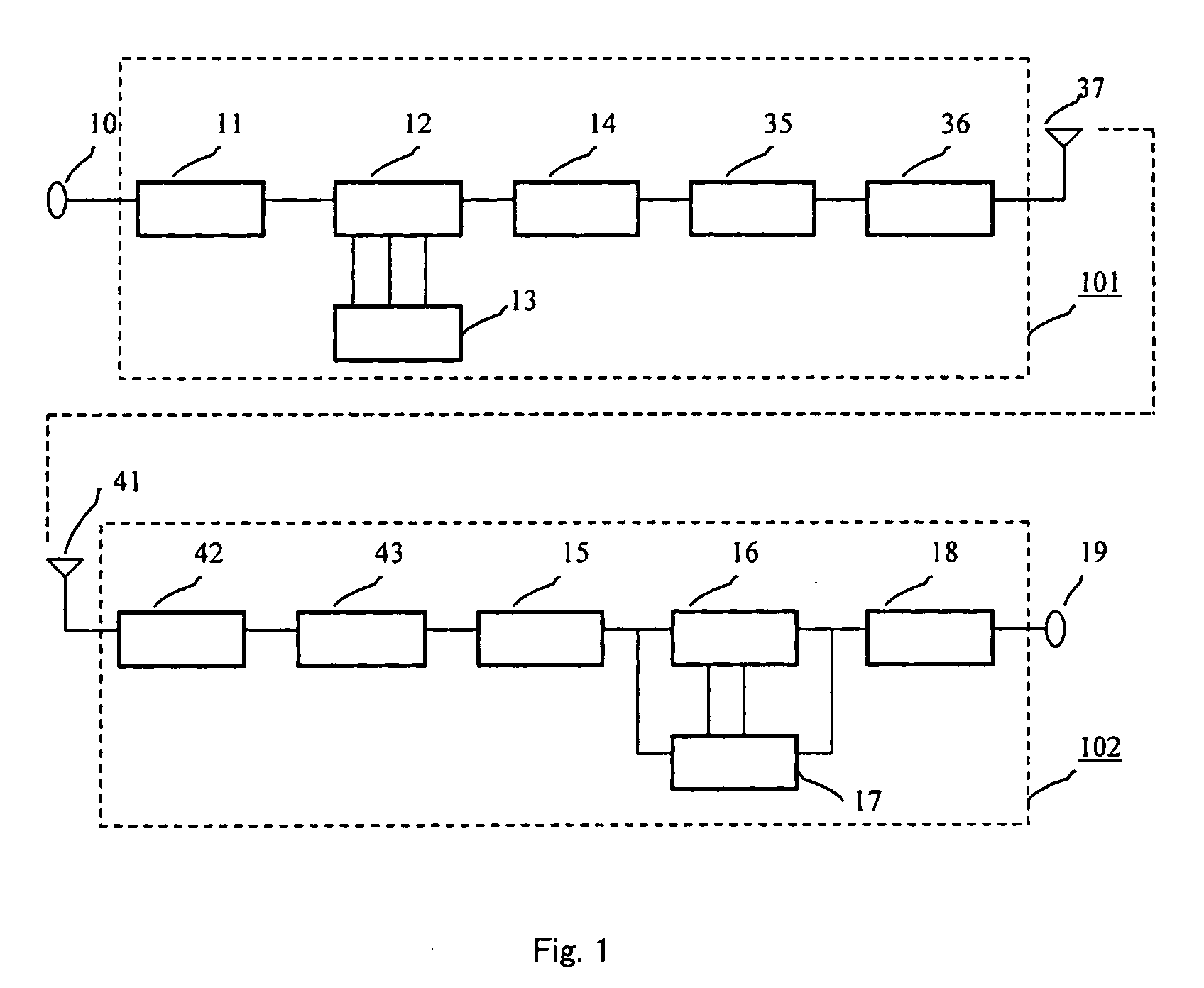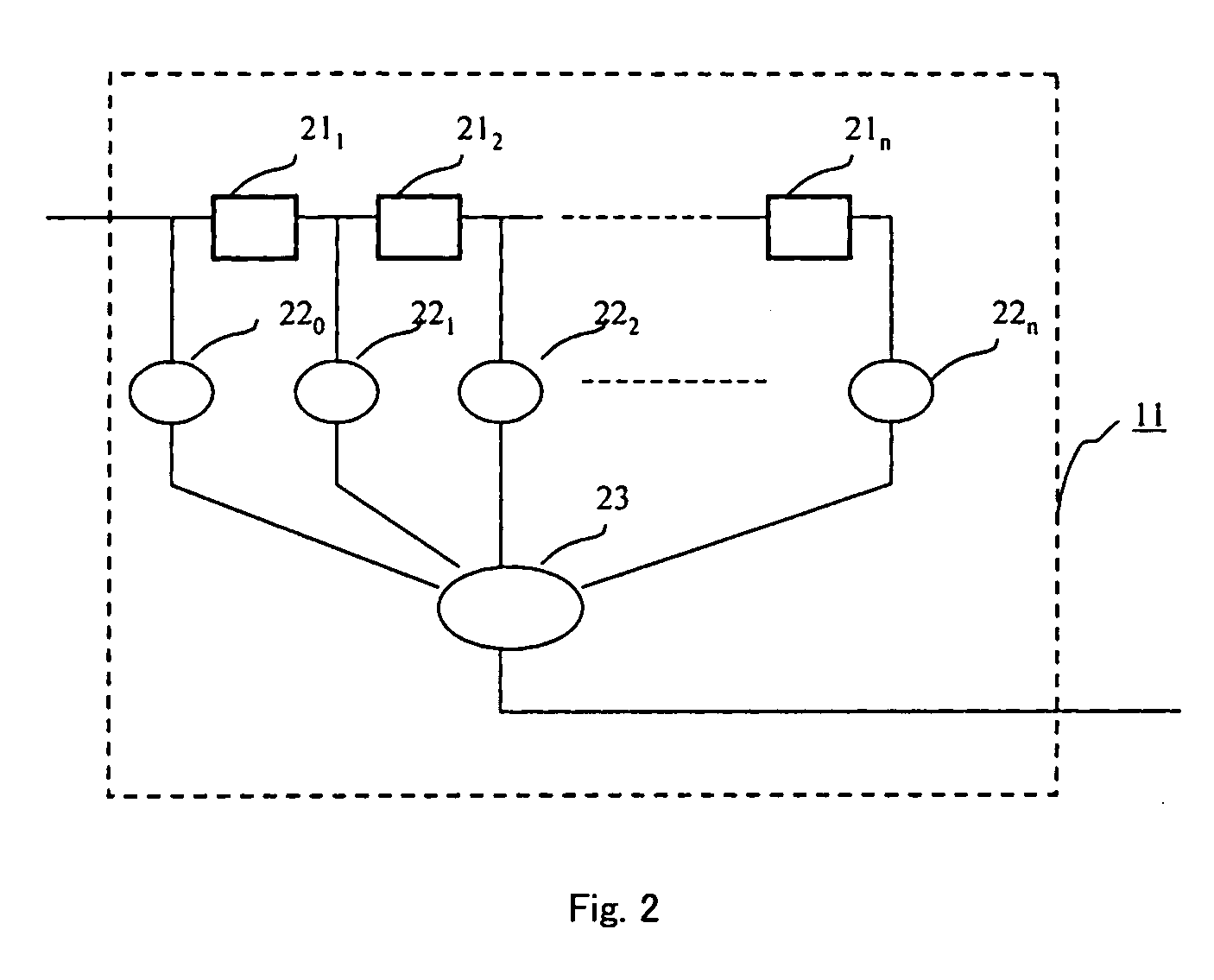Digital communication method and digital communication device
a communication method and digital communication technology, applied in the field of digital communication methods and devices, can solve the problems of decrepit purification characteristics, degrading error rate, and dropping subscriber capacity, and achieve the effect of reducing the number of side lobe spectra, and increasing the error tolerance to communication channel nois
- Summary
- Abstract
- Description
- Claims
- Application Information
AI Technical Summary
Benefits of technology
Problems solved by technology
Method used
Image
Examples
Embodiment Construction
[0043] A digital communication method and digital communication device of the best mode for carrying out the present invention will be explained hereinbelow using the figures. Below, the aspects of the embodiment of the present invention will be explained in detail while referring to the figures.
[0044]FIG. 1 is a simplified block diagram showing a first embodiment of a digital communication device of the present invention. In a transmitter 101, binary digital information inputted from a terminal 10 is sequentially inputted to an encoder 11. The encoder 11 outputs ternary digital information to a three-phase modulator 12 each time binary digital information is inputted. Sine waves whose phases differ only from one another are supplied from a signal generator 13 to the three-phase modulator 12, and the three-phase modulator 12 selects one of the signals supplied from the signal generator 13 in accordance with the ternary digital information inputted from the encoder 11.
[0045] If the...
PUM
 Login to View More
Login to View More Abstract
Description
Claims
Application Information
 Login to View More
Login to View More - R&D
- Intellectual Property
- Life Sciences
- Materials
- Tech Scout
- Unparalleled Data Quality
- Higher Quality Content
- 60% Fewer Hallucinations
Browse by: Latest US Patents, China's latest patents, Technical Efficacy Thesaurus, Application Domain, Technology Topic, Popular Technical Reports.
© 2025 PatSnap. All rights reserved.Legal|Privacy policy|Modern Slavery Act Transparency Statement|Sitemap|About US| Contact US: help@patsnap.com



